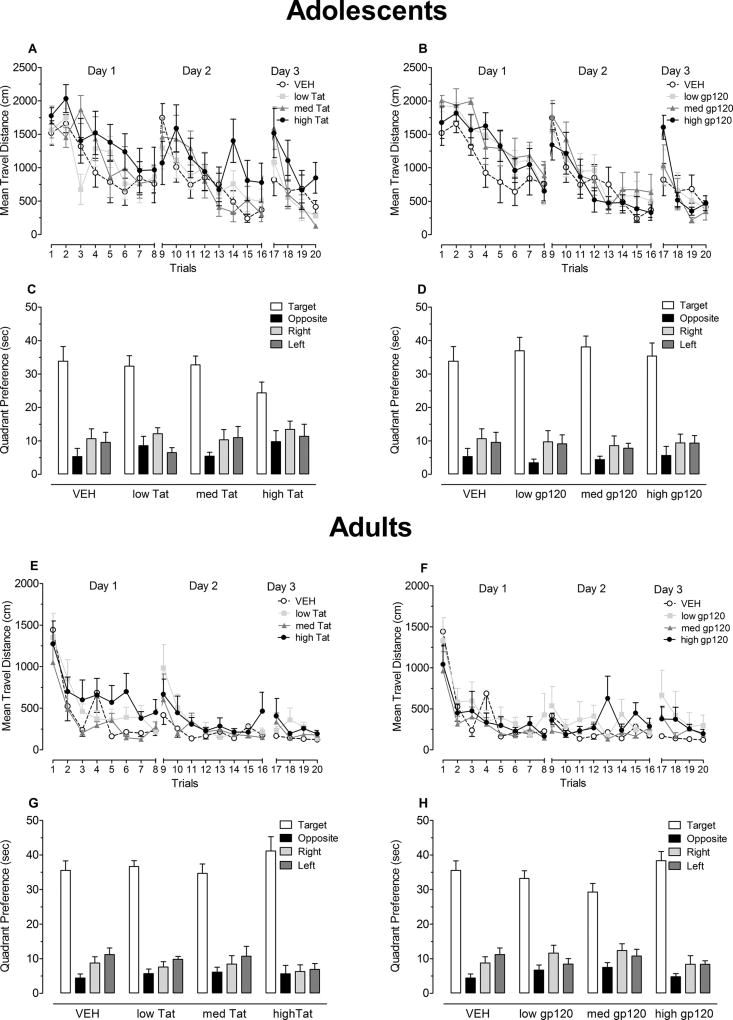Figure 5.
Acquisition training and probe test assessments for adolescents, at P46 – P51 (Tat(A, C) and gp120(B, D)), and adults, at P104 – P109 ((Tat (E, G) and gp120 (F, H)). Mean (± S.E.M.) travel distance in acquisition training is illustrated in panels A and E for Tat dose treatment and panels B and F for gp120 dose treatment. Significant treatment effects were noted for Tat dose treatment on days 1 and 3 in both adolescence and adulthood. Mean (± S.E.M.) time spent in the four quadrants during the probe test is illustrated in panels C and G for Tat dose treatment and panels D and H for gp120 dose treatment. Despite significant discrimination and evasion effects, planned contrast analyses revealed no overall or dose-dependent treatment effects for either Tat or GP120 treatment.

